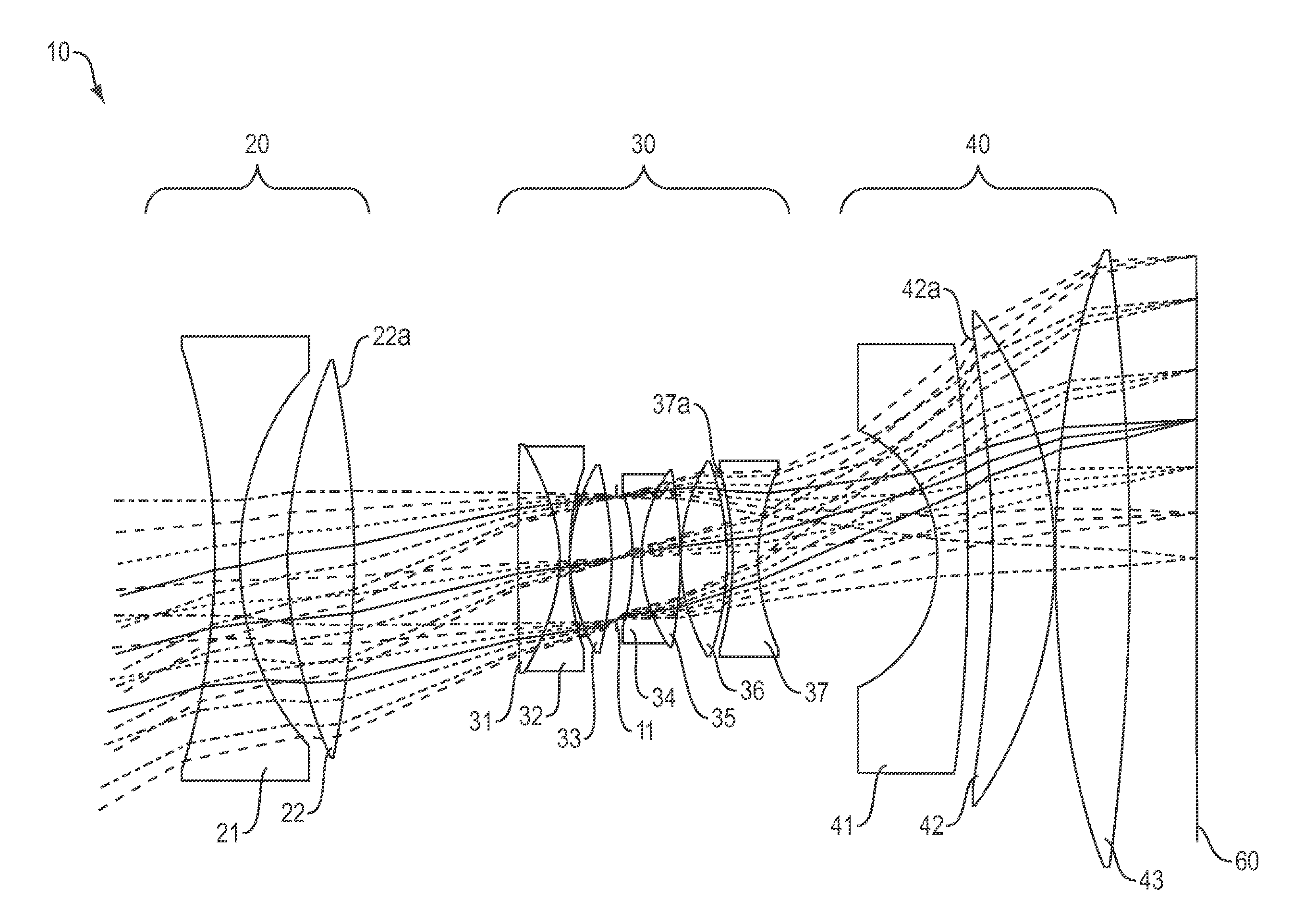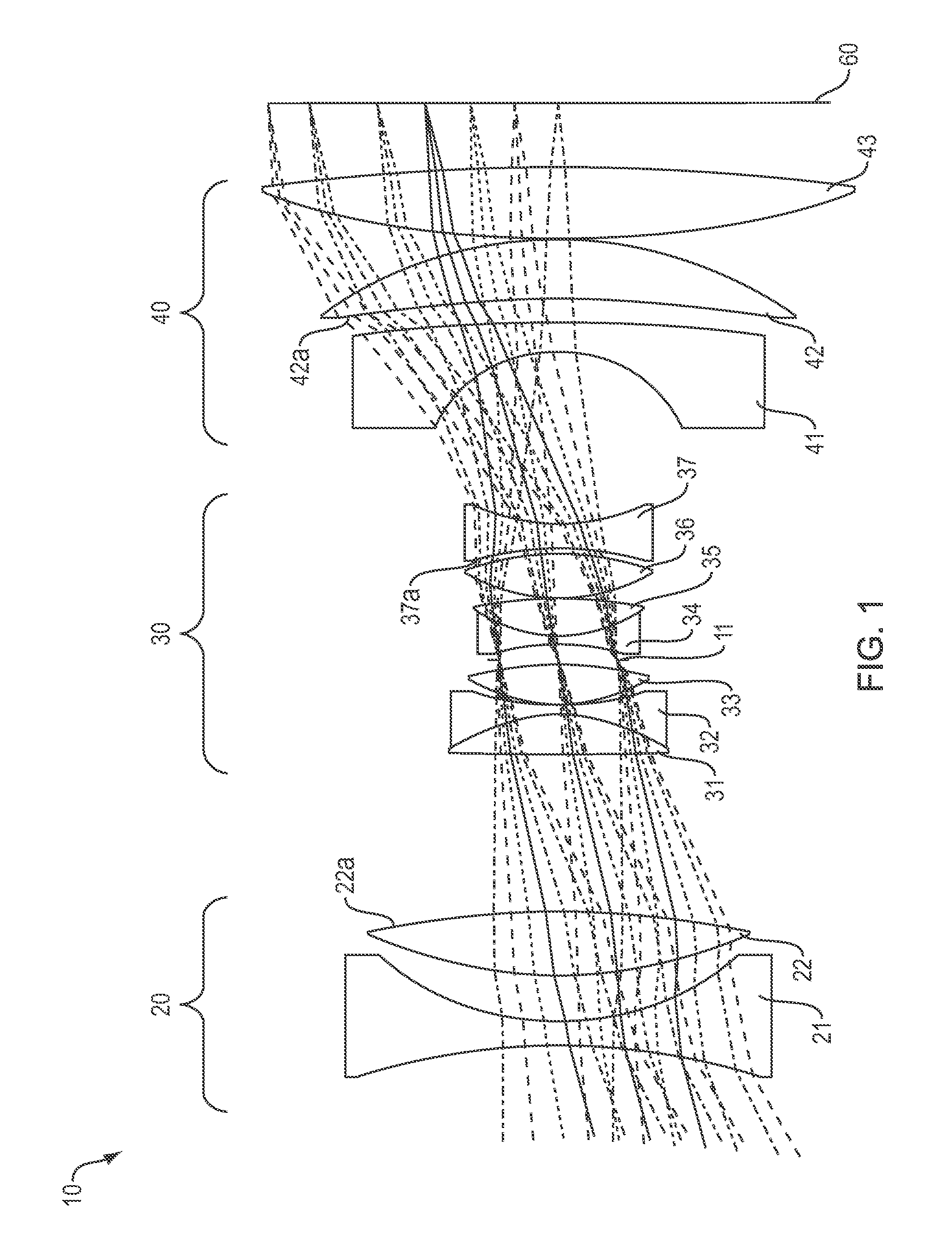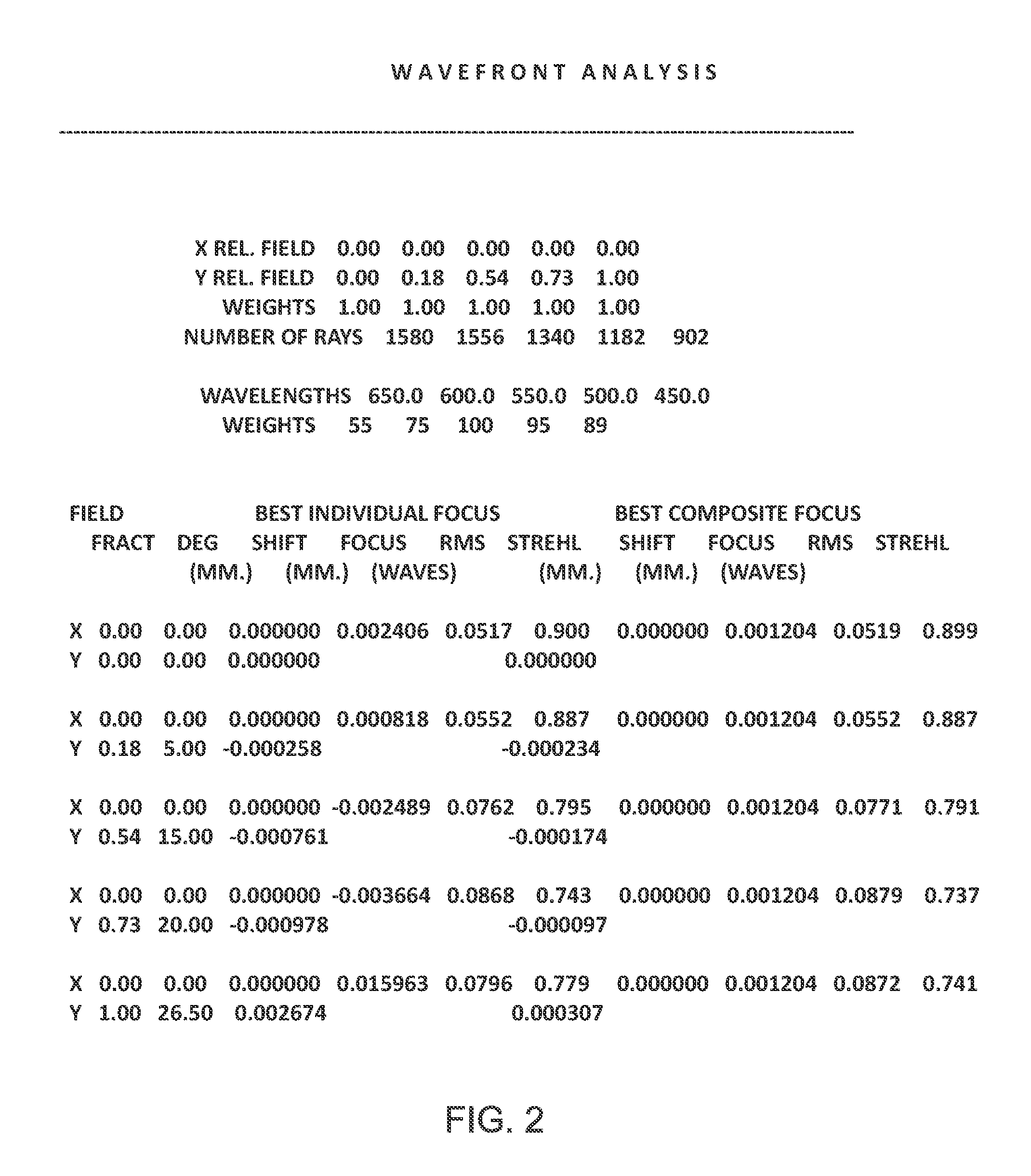Low distortion athermalized imaging lens
a low-distortion, imaging lens technology, applied in the field of optics, can solve the problems of not being corrected, affecting the accuracy of remote aerial high-resolution photography and precise mapping, significant field curvature and secondary spectrum, etc., to minimize both the amount of light lost and the amount of light incident.
- Summary
- Abstract
- Description
- Claims
- Application Information
AI Technical Summary
Benefits of technology
Problems solved by technology
Method used
Image
Examples
first embodiment
[0122]FIG. 1 is a cross-sectional illustration of the lens 10 of the present invention. The lens 10 includes a first optical group 20, a second optical group 30 and a third optical group 40 in order from the object to the image plane. The aperture stop 11 is positioned inside the second optical group 30. An image of a distant object is formed on a focal plane array 60. In embodiments, the focal plane array incorporates CMOS with micro lenses, 2×2 Bayer filter geometry, and 1.8 Giga pixels. In other applications the image surface 60 may constitute CCD or a direct viewing screen.
[0123]In the embodiment of FIG. 1 the first optical group 20 has an overall positive optical power and is configured to receive light from a remote object and to direct the converged light onto the second optical group 30. The first optical group 20 includes two optical elements 21 and 22, having negative and positive optical powers respectively. As seen in FIG. 1, the first optical element 21 of the first opt...
second embodiment
[0155]FIG. 8 is a cross-sectional illustration of the lens 100 of the present invention. This embodiment is essentially identical to the embodiment of FIG. 1, except for the specific relations that the optical elements satisfy. In particular, the lens 100 includes a first optical group 200, a second optical group 300 and a third optical group 400 in order from the object to the image plane. The aperture stop 110 is positioned inside the second optical group 300. An image of a distant object is formed on a focal plane array 600. In embodiments, the focal plane array incorporates CMOS with micro lenses, 2×2 Bayer filter geometry, and 1.8 Giga pixels. In other applications the image surface 600 may constitute CCD or a direct viewing screen.
[0156]In the embodiment of FIG. 8 the first optical group 200 has an overall negative optical power and is configured to receive light from a remote object and to direct the diverged light onto the second optical group 300. The first optical group 20...
third embodiment
[0186]FIG. 15 is a cross-sectional illustration of the lens 1000 of the present invention. The lens 1000 includes a first optical group 700, a second optical group 800 and a third optical group 900 in the stated order from the object to the image plane. Aperture stop 80 is positioned inside the second optical group 800. An image of a distant object is formed on a focal plane array 90. In some embodiments, the focal plane array incorporates CMOS with micro lenses, 2×2 Bayer filter geometry, and 1.8 Giga pixels. In other embodiments the image surface 60 incorporates CCD or a direct viewing screen.
[0187]The first optical group 700 has an overall positive optical power and is configured to receive light from the remote object and to direct the converged light onto the second optical group 800. The first optical group 700 includes two optical elements 701 and 702, having negative and positive optical powers respectively. As shown in FIG. 15, the first optical element 701 of the first opt...
PUM
 Login to View More
Login to View More Abstract
Description
Claims
Application Information
 Login to View More
Login to View More - R&D
- Intellectual Property
- Life Sciences
- Materials
- Tech Scout
- Unparalleled Data Quality
- Higher Quality Content
- 60% Fewer Hallucinations
Browse by: Latest US Patents, China's latest patents, Technical Efficacy Thesaurus, Application Domain, Technology Topic, Popular Technical Reports.
© 2025 PatSnap. All rights reserved.Legal|Privacy policy|Modern Slavery Act Transparency Statement|Sitemap|About US| Contact US: help@patsnap.com



